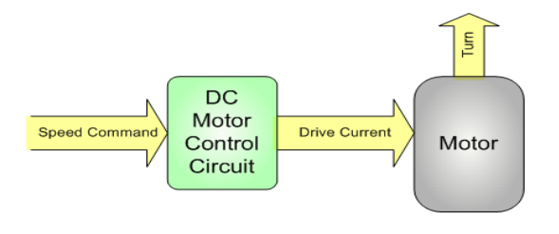A Design of Robotic Bord Cleaner by Using Arduino Microcontroller
Keywords:
Robotic cleaners, DC voltage, blower, ultrasonic sensors, Arduino mega microcontrollerAbstract
A tool that is utilised at several institutions all around the world is the whiteboard. Erasing the ink from the board, however, may be time-consuming and distracting. Modern houses with more automation are more convenient and need less time to clean. Despite the fact that robotic cleaners have made housecleaning simpler, most of them are too loud and huge to be used regularly. Therefore, to address these shortcomings, advancements in robotic cleaning technology are a sine qua non. Here, we discuss the creation of a portable and effective robotic cleaning robot for possible application in homes and offices. The developed robot is shaped like a disc, is furnished with cleaning tools, and is managed by an Arduino mega microcontroller. Two sweepers that are each driven by a 6 V DC motor and a retractable dustbin with an attached cooling fan assist it gather dirt. Two motor the robot's front caster wheel, which also controls turning, provide propulsion. To help the robot navigate, four ultrasonic sensors that are 90 degrees apart from one another detect obstacles. The robot is powered by five batteries. It is a trashcan made of cardboard with a little blower that weighs around 2 kg. In this instance, we used an automated roller-based cleaning to reduce the amount of dust in the sweeper. The voltage was quite low. When fully charged, a battery can efficiently clean the floor for two hours while running constantly.When the ultrasonic sensor reads a distance of less than 25 cm, the sensor's distance number is set. When trying the ultrasonic sensor distance value, different situations were found. The road floor cleaning robot prototype's condition may be acquired at a distance more than 25 cm, however at a distance less than 25 cm, the condition of the robot prototype has ceased. With this feature, the device may be used both at home and at the office, making cleaning a completely autonomous activity.
Downloads
References
Sharath GS, Hiremath N, Manjunatha G. Design and analysis of gantry robot for pick and place mechanism with Arduino Mega 2560 microcontroller and processed using pythons. Materials Today: Proceedings. 2021 Jan 1;45:377-84.
Hammoud M, Shokr B, Assi A, Hallal J, Khoury P. Effect of dust cleaning on the enhancement of the power generation of a coastal PV-power plant at Zahrani Lebanon. Solar Energy. 2019 May 15;184:195-201.
Murdan AP, Ramkissoon PK. A smart autonomous floor cleaner with an Android-based controller. In2020 3rd International Conference on Emerging Trends in Electrical, Electronic and Communications Engineering (ELECOM) 2020 Nov 25 (pp. 235-239). IEEE.
Jarande PB, Murakar SP, Vast NS, Ubale NP, Saraf SS. Robotic Vacuum Cleaner Using Arduino with Wifi. In2018 Second International Conference on Inventive Communication and Computational Technologies (ICICCT) 2018 Apr 20 (pp. 1513-1517). IEEE.
Akyazi Ö, Şahin E, Özsoy T, Algül M. A solar panel cleaning robot design and application. AvrupaBilimveTeknolojiDergisi. 2019 Oct:343-8.
Jawale JB, Karra VK, Patil BP, Singh P, Singh S, Atre S. Solar panel cleaning bot for enhancement of efficiency—an innovative approach. In2016 3rd International Conference on Devices, Circuits and Systems (ICDCS) 2016 Mar 3 (pp. 103-108). IEEE.
Siregar IM, Yunus M, Siregar VM. A Prototype of Garbage Picker Ship Robot Using Arduino Nano Microcontroller. Internet of Things and Artificial Intelligence Journal. 2022;2(3):150-68.
Amitha S, Raj PN, Sonika HP, Urs S, Tejashwini B, Kulkarni SA, Jha V. Segregated waste collector with robotic vacuum cleaner using internet of things. In2020 IEEE International Symposium on Sustainable Energy, Signal Processing and Cyber Security (iSSSC) 2020 Dec 16 (pp. 1-5). IEEE.
Akib A, Tasnim F, Biswas D, Hashem MB, Rahman K, Bhattacharjee A, Fattah SA. Unmanned floating waste collecting robot. InTENCON 2019-2019 IEEE Region 10 Conference (TENCON) 2019 Oct 17 (pp. 2645-2650). IEEE.
Mohammed MN, Al-Zubaidi S, Bahrain SH, Zaenudin M, Abdullah MI. Design and development of river cleaning robot using IoT technology. In2020 16th IEEE International Colloquium on Signal Processing & Its Applications (CSPA) 2020 Feb 28 (pp. 84-87). IEEE.
Asafa TB, Afonja TM, Olaniyan EA, Alade HO. Development of a vacuum cleaner robot. Alexandria engineering journal. 2018 Dec 1;57(4):2911-20.
Juang HS, Lum KY. Design and control of a two-wheel self-balancing robot using the arduino microcontroller board. In2013 10th IEEE International Conference on Control and Automation (ICCA) 2013 Jun 12 (pp. 634-639). IEEE.
Goon LH, Isa AN, Choong CH, Othman WA. Development of Simple Automatic Floor Polisher Robot using Arduino. International Journal of Engineering Creativity & Innovation. 2019 Mar 29;1(1):17-23.
Ronnaronglit N, Maneerat N. A cleaning robot for solar panels. In2019 5th International Conference on Engineering, Applied Sciences and Technology (ICEAST) 2019 Jul 2 (pp. 1-4). IEEE.
Gopalakrishnan R, Ramani U, Maheswari KU, Thilagaraj M. Design and Development of Controller Based Automatic Ground Cleaning Robot. In2022 6th International Conference on Computing Methodologies and Communication (ICCMC) 2022 Mar 29 (pp. 491-494). IEEE.

Downloads
Published
How to Cite
Issue
Section
License
Copyright (c) 2023 R. Maguteeswaran, S. Rajalakshmi , T. Jayasankar

This work is licensed under a Creative Commons Attribution-ShareAlike 4.0 International License.
All papers should be submitted electronically. All submitted manuscripts must be original work that is not under submission at another journal or under consideration for publication in another form, such as a monograph or chapter of a book. Authors of submitted papers are obligated not to submit their paper for publication elsewhere until an editorial decision is rendered on their submission. Further, authors of accepted papers are prohibited from publishing the results in other publications that appear before the paper is published in the Journal unless they receive approval for doing so from the Editor-In-Chief.
IJISAE open access articles are licensed under a Creative Commons Attribution-ShareAlike 4.0 International License. This license lets the audience to give appropriate credit, provide a link to the license, and indicate if changes were made and if they remix, transform, or build upon the material, they must distribute contributions under the same license as the original.





